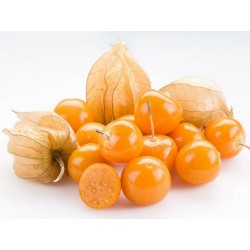Menu
-
MenuGeri
- Home
-
Kategoriler
-
-
Kategoriler
-
Sebze tohumları
-
Ülkelere Göre Çeşitler
- Ermenistan'dan çeşitler
- BH'den Çeşitler
- Hırvatistan'dan Çeşitler
- Fransa'dan Çeşitler
- Almanya'dan Çeşitler
- Yunanistan'dan Çeşitler
- Macaristan Çeşitleri
- Hindistan'dan Çeşitler
- İtalya'dan çeşitleri
- Japonya'dan Çeşitler
- Kuzey Makedonya çeşitleri
- Peru Çeşitleri
- Rusya'dan Çeşitler
- Sırbistan'dan Çeşitler
- Slovenya'dan Çeşitler
- İspanya Çeşitleri
- Tayland çeşitleri
- Türkiye'den Çeşitler
- ABD'den Çeşitler
- Domates tohumları
- Mısır tohumları
- Kabak ailesi
- Fasulye ailesi
- Salatalık tohumları
- Dolma biber tohumları
- Havuç ailesi
- Soğan ailesi
- Marul tohumları
- Patates ailesi
- Lahana ailesi
- Turp tohumları
- Pancar ailesi
- Karpuz tohumları
- Kavun tohumları
- Karnabahar tohumları
- Ayçiçeği ailesi
-
Ülkelere Göre Çeşitler
- Meyve tohumları
- Acı biber tohumları
- Tıbbi bitki tohumları
- Tırmanma bitki tohumları
- Ağaçlar - Çalı tohumları
- Palmiye tohumları
- Süs bitkileri tohumları
- Tütün tohumları
-
Sebze tohumları
-
-
-
-
- YENİ ÜRÜNLER
- Hesap oluştur
- Teslimat - Ödeme
- FAQ
Unbranded markalı ürünlerin listesi
23 adet ürün var.
Sıralama ölçütü:
Toplam 23 üründen 1-15 arası gösteriliyor

İtalya'dan çeşitli
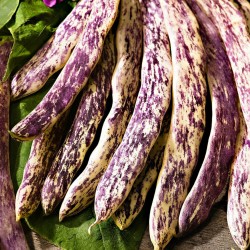
Bean Seeds Merveille de...
Fiyat
€2,50
(SKU: VE 138 (3g))
Seeds Gallery EU,
5/
5
<div id="idTab1" class="rte">
<h2 id="short_description_content"><strong>Vegetable Bean Seeds Merveille de Piemonte</strong></h2>
<h2 class=""><span style="color: #ff0000;"><strong>Price for Package of 10 (3g) seeds.</strong></span></h2>
<p>A spectacular French Bean that loses its purple markings in the pan and turns green. These long beans (approx. 16-20 cm) taste terrific! They taste great as a cooked dry bean too!</p>
<p>So-called 'stringless' French Beans are considered the tastiest. It is actually hard to find them with 'string' nowadays as most modern cultivars are stringless.</p>
<p> </p>
<p>There are also yellow French Beans which a called Butter Beans when dried - not surprisingly because of the colour. They have a somewhat milder flavour than the green variety.</p>
<p> </p>
<p>French Beans are tastiest when eaten shortly after picking but they will last several days in the fridge. Chop into 2 cm pieces and steam or boil - but not too long as they are best when still crunchy. A short turn in the wok is great too! French Beans freeze well too although they may loose some of their crispiness. Chop finely and blanche them before freezing.</p>
<p><strong>Special Directions For Short Season Climates </strong></p>
<p><strong>SOWING: </strong>Plant outdoors in late spring after weather has warmed and all dan-ger of frost has passed. Plant 4 to 6 seeds per pole in hills. Plant seeds on their side covering seed with 1 to 1 1/2 inches of fine soil firmed down. </p>
<p><strong>SPACING:</strong> Provide 2 1/2 to 3 feet between hills. When planted in rows space rows 3 feet apart.</p>
<p><strong>THINNING:</strong> Thin to 3 strongest plants per pole in hills, when they are about 4 inches tall. Thin to 4 to 6 inches apart in rows.</p>
<p><strong>GERMINATION: </strong>1 to 2 weeks depending upon soil and weather conditions. Keep soil moderately moist during germination.</p>
</div><script src="//cdn.public.n1ed.com/G3OMDFLT/widgets.js"></script>
VE 138 (3g)


Macaristan'dan çeşitli
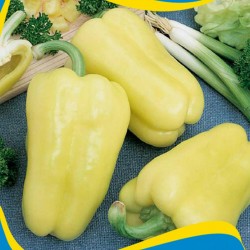
Biber Tohumları Şaman
Fiyat
€1,35
(SKU: PP 12)
Seeds Gallery EU,
5/
5
<meta http-equiv="Content-Type" content="text/html; charset=UTF-8" />
<h2><strong>Biber Tohumları Şaman</strong></h2>
<h2><span style="color: #ff0000;"><strong>10 tohumların Paketi için fiyat.</strong></span></h2>
<p>Sürekli büyüyen, beyaz Biber. Meyveler 10-12 cm uzunluğunda, kalın etli, sarkık, tatlı, omuz genişliği 6-8 cm, ağırlık 110-120 g'dır. Seralarda ve açık tarlalarda üretime uygundur.</p>
<p>Stresi iyi tolere eder, salatalık mozaik virüsüne karşı dayanıklıdır ve külleme karşı toleranslıdır.</p>
PP 12 (10 S)

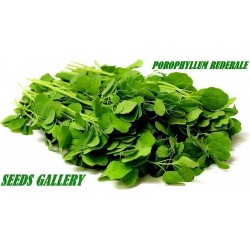
Bolivian Coriander - Papalo...
Fiyat
€2,25
(SKU: MHS 80)
Seeds Gallery EU,
5/
5
<h2><strong><em><span style="text-decoration:underline;">Bolivian Coriander - Papalo Seeds (Porophyllum ruderale)</span></em></strong></h2>
<h3><span style="color:#ff0000;"><strong>Price for Package of 5 seeds.</strong></span></h3>
<p>Porophyllum ruderale is an herbaceous annual plant whose leaves can be used for seasoning food. The taste has been described as "somewhere between arugula, cilantro and rue."[1] The plant is commonly grown in Mexico and South America for use in salsas. When fully grown, this plant grows to about 5 feet in height and 3 feet in diameter.</p>
<p>The plant is easy to grow from seed in a well drained soil, which should be allowed to dry between watering.</p>
<p> </p>
<p><strong>Culture</strong></p>
<p>Having been used by many cultures, Porophyllum ruderale is known by many names, including Bolivian coriander, quillquiña (also spelled quirquiña or quilquiña), yerba porosa, killi, pápalo, tepegua, "mampuritu" and pápaloquelite. Despite the name "Bolivian coriander", this plant is not botanically related to Coriandrum sativum.</p>
<p> </p>
<p>This plant is known in Mexico as pápaloquelite, commonly accompanying the famous Mexican tacos. Not all Mexicans enjoy its taste, but some find that it improves the flavor of tacos and typical Mexican salsas and soups.</p>
<p> </p>
<p>In Puebla cuisine, pápalo is used as a condiment on traditional cemita sandwiches, a regional type of Mexican torta.</p>
<p>Papalo was used in the Azteca era, but never as medicine, only as food.[citation needed]</p>
<p>One study claims that Papalo exhibits some health benefits such as: lowering cholesterol, lowering blood pressure, and aiding digestion.</p>
<p> </p>
<table style="width:551px;" border="1" cellspacing="0" cellpadding="0"><tbody><tr><td colspan="2" valign="top" width="100%">
<p align="center"><strong><span style="color:#008000;">Sowing Instructions</span></strong></p>
</td>
</tr><tr><td valign="top" nowrap="nowrap" width="26%">
<p align="center"><strong><span style="color:#008000;">Propagation:</span></strong></p>
</td>
<td valign="top" width="74%">
<p align="center"><strong><span style="color:#008000;">Seeds</span></strong></p>
</td>
</tr><tr><td valign="top" nowrap="nowrap" width="26%">
<p align="center"><strong><span style="color:#008000;">Pretreat:</span></strong></p>
</td>
<td valign="top" width="74%">
<p align="center"><strong><span style="color:#008000;">0</span></strong></p>
</td>
</tr><tr><td valign="top" nowrap="nowrap" width="26%">
<p align="center"><strong><span style="color:#008000;">Stratification:</span></strong></p>
</td>
<td valign="top" width="74%">
<p align="center"><strong><span style="color:#008000;">0</span></strong></p>
</td>
</tr><tr><td valign="top" nowrap="nowrap" width="26%">
<p align="center"><strong><span style="color:#008000;">Sowing Time:</span></strong></p>
</td>
<td valign="top" width="74%">
<p align="center"><strong><span style="color:#008000;">all year round</span></strong></p>
</td>
</tr><tr><td valign="top" nowrap="nowrap" width="26%">
<p align="center"><strong><span style="color:#008000;">Sowing Depth:</span></strong></p>
</td>
<td valign="top" width="74%">
<p align="center"><strong><span style="color:#008000;">Needs Light to germinate! Just sprinkle on the surface of the substrate + gently press</span></strong></p>
</td>
</tr><tr><td valign="top" nowrap="nowrap" width="26%">
<p align="center"><strong><span style="color:#008000;">Sowing Mix:</span></strong></p>
</td>
<td valign="top" width="74%">
<p align="center"><strong><span style="color:#008000;">Coir or sowing mix + sand or perlite</span></strong></p>
</td>
</tr><tr><td valign="top" nowrap="nowrap" width="26%">
<p align="center"><strong><span style="color:#008000;">Germination temperature:</span></strong></p>
</td>
<td valign="top" width="74%">
<p align="center"><strong><span style="color:#008000;">20-25°C</span></strong></p>
</td>
</tr><tr><td valign="top" nowrap="nowrap" width="26%">
<p align="center"><strong><span style="color:#008000;">Location:</span></strong></p>
</td>
<td valign="top" width="74%">
<p align="center"><strong><span style="color:#008000;">bright + keep constantly moist not wet</span></strong></p>
</td>
</tr><tr><td valign="top" nowrap="nowrap" width="26%">
<p align="center"><strong><span style="color:#008000;">Germination Time:</span></strong></p>
</td>
<td valign="top" width="74%">
<p align="center"><strong><span style="color:#008000;">1 - 8 weeks</span></strong></p>
</td>
</tr><tr><td valign="top" nowrap="nowrap" width="26%">
<p align="center"><strong><span style="color:#008000;">Watering:</span></strong></p>
</td>
<td valign="top" width="74%">
<p align="center"><strong><span style="color:#008000;">Water regularly during the growing season</span></strong></p>
</td>
</tr><tr><td valign="top" nowrap="nowrap" width="26%">
<p><strong><span style="color:#008000;"> </span></strong></p>
</td>
<td valign="top" width="74%">
<p align="center"><br /><strong><span style="color:#008000;"> <em>Copyright © 2012 Seeds Gallery - Saatgut Galerie - Galerija semena. </em><em>All Rights Reserved.</em></span></strong></p>
</td>
</tr></tbody></table>
MHS 80


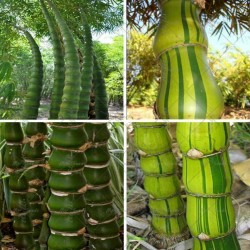
Buda Bambu - Buddha's-göbek...
Fiyat
€2,45
(SKU: B 4)
Seeds Gallery EU,
5/
5
<!DOCTYPE html>
<html>
<head>
<meta http-equiv="Content-Type" content="text/html; charset=UTF-8" />
</head>
<body>
<h2 id="short_description_content"><strong>Buda Bambu - Buddha's-göbek bambu tohumu (Bambusa ventricosa)</strong></h2>
<h2 class="rte align_justify"><span style="color: #ff0000;"><strong>5 tohum paketi için fiyat.</strong></span></h2>
<p>Bambusa ventricosa, Çin'in Guangdong eyaletine özgü bir bambu türüdür. Türler, soğanlı ve süs kültürleri için dünyadaki subtropikal bölgelerde yaygın olarak yetiştirilmektedir. Türler bonsai'de kullanılır. Yaygın isimler Buda bambu ve Buda'nın göbek bambu.</p>
<p>Buda Göbek bambuunun bu güzel şekli, yeşili ortaya çıkaran ve yakında yeşil çizgili güzel bir altın sarısına dönüşen kültürlere sahiptir. Yeşil form gibi, ideal koşullar verildiğinde düz ve ince büyüyecektir. Bu bambu, uygun bakım ve budama ile keyifli bir örnek olabileceği bir konteyner bitkisi olarak en iyisidir.</p>
<p>Maksimum Yükseklik: 55 feet, 30-40 feet ortalama</p>
<p>Konteyner Yüksekliği: 10 ila 15 ft?</p>
<p>Çap: 1,5 - 2 inç</p>
<p>Sertlik: 21 ° F</p>
<p>USDA bölgesi 9b - 10 için önerili</p>
</body>
</html>
B 4 (5 S)

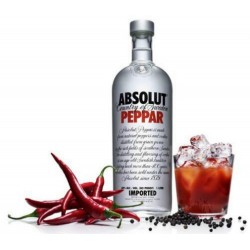
Chili Cayenne Long Slim Seeds
Fiyat
€7,85
(SKU: C 19 L)
Seeds Gallery EU,
5/
5
<h2><span style="text-decoration:underline;"><em><strong>Chili Cayenne Long Slim Seeds</strong></em></span></h2>
<h3><span style="color:#ff0000;"><strong>Price for Package of 10 or 50 seeds.<br /></strong></span></h3>
<div>
<p class="description">Long Slim Red Cayenne is one of the best known hot chili peppers, it is a good long hot chilli that always performs well and dries nicely. <br />Producing an abundance of very wrinkled fruits that grow 12 to 15cm (5 to 6in) long, the fruits have thin flesh and are used fresh in hot sauces or dried and ground for cayenne pepper. At a heat level of around 30,000 to 50,000 SHU, they are one of the best peppers for seasoning pickles and salsa. Good for deep freezing and perfect for adding a kick to a Bloody Mary or to vodka. <br /><br />Long Slim Red Cayenne is a very productive plant, it is upright-growing and reaches about 60cm in height. The plants are covered with long, thin peppers which mature from emerald green to a scarlet red in approximately 70 days. <br />This very attractive plants also make quite a spectacle when grown as a conservatory or patio plant.<br /><br />According to one anonymous writer, this variety was first documented in 1493 by Christopher Columbus and that one of his passengers, a man named de Cuneo, described how Native Americans ate peppers like one would eat an apple. Cayenne peppers are used threaded onto a string as attractive 'Ristra' craft decorations.</p>
<p><strong><span class="headings">Storage of Seeds:</span> </strong><br />Store seeds away from children, sealed in their packaging in a cool, dry, dark place, or in a fridge. Never store them in a freezer as the sudden temperature drop is likely to kill them. Don't leave the seeds in direct sunlight as the heat generated may kill them.</p>
<p><span class="headings"><strong>Sowing</strong>:</span> Sow from mid February to mid June<br />The temperature, moisture, and air circulation all play a role in growing plants from seeds. Too little heat, too much moisture, and lack of air circulation will cause poor results. Do not use jiffy peat pots, plugs, or potting soil as the soil becomes too dry or too wet, which can lead to low germination, disease and fungus.<br />Fill small cells or trays with a good sterile seed compost and sow the seeds on the surface. “Just cover” with a fine sprinkling (3mm) of soil or vermiculite.<br />Keep the compost moist - don't let the top of the compost dry out (a common cause of germination failure) If you wish, spray the surface with a dilute copper-based fungicide.<br />Cover the pot or tray with plastic film or place in a heated propagator, south facing window or a warm greenhouse. <br />The ideal temperature is around 18 to 20°C (65 to 72°F)</p>
<p><span class="headings"><strong>Transplanting</strong>:</span> <br />When the seedlings have produced their first pair of true leaves they can be potted on into individual 7 to 10cm (3 to 4in) pots. Use good quality potting compost and mix in some organic slow release fertiliser. Pot the chilli on again before it becomes root-bound.<br />Water the seedlings regularly, but don't let them become waterlogged as this encourages rot. Don't let them dry out as they rarely recover at this stage. Water the soil, not the foliage. Once the plants have established, it is better to water heavy and infrequently, allow the top inch or so to dry out in between watering.</p>
<p>Seedlings should be grown in good light, but should not be exposed to direct sunlight from late spring to early autumn. Weaker sunlight from autumn to spring is unlikely to do them harm. Once seedlings have put on some growth they need lots of light. Growing them under a grow-light produces excellent stocky plants, as will a warm sunny windowsill. Adult chilli plants need lots of light. However, more than 4 hours or so in hot direct sunlight will dry them out quickly.<br />Acclimatise to outdoor conditions for 2 to 3 weeks before they are moved permanently outside. Plant them into rich moist soil. Flower do not form and fruit will not set if the temperature is much below 17°C (62°F) for most of the day, so wait until June/July for best results with outdoor planting.</p>
<p><span class="headings"><strong>Fertilising</strong>: </span><br />After the first flowers appear, feed every one or two weeks with a half-strength liquid tomato feed. You could also add Seaweed extract to the water once a week.</p>
<p><strong><span class="headings">Pollinating Flowers:</span> (optional)</strong><br />Chilli plants are self fertile and will generally pollinate themselves. However, if you want to give them a helping hand to ensure that lots of fruit are set indoors, use a cotton wool bud to gently sweep the inside of the flowers, spreading the pollen as you go. The flower's petals will drop off as the green middle part of the flower starts to swell slightly. This is the chilli pepper beginning to grow.</p>
<p><span class="headings"><strong>Harvesting</strong>:</span> Harvest in 90 to 110 days <br />Chillies will take a few weeks to develop and a further couple weeks to turn from green to red. Harvest any time after they are fully developed. Use scissors to snip the fruits so you don't damage the plant.</p>
<p><span class="headings"><strong>Storage</strong>:</span> <br />After being roasted and peeled, Poblanos can be preserved by either canning or freezing. Storing poblanos in airtight containers will suffice for several months.</p>
<p><span class="warning"><strong>WARNING</strong>: </span><br />Be careful handling chilli seeds as they can cause a painful burning sensation: Avoid contact with the eyes or any sensitive skin before washing your hands thoroughly.</p>
<p><span class="headings"><strong>Origin</strong>:</span> <br />Chiles originated in South America, where they have been under cultivation since prehistoric times. The seed's long viability facilitated the rapid spread of the plant throughout the tropics and sub-tropics by the Spanish and Portuguese, the spice becoming as popular there as vine pepper. Chiles were long known as 'Indian' pepper - meaning 'of the New World' rather than 'of India'. <br />The Cayenne is known to be Pre-Columbian in origin. It is said to be named after the Cayenne River in French Guyana. First offered in the seed trade by Joseph Breck & Son in 1883</p>
</div>
C 19 L

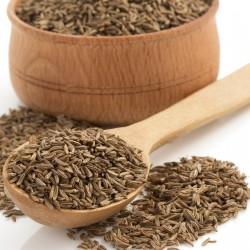
Cumin Seed (Cuminum cyminum)
Fiyat
€1,65
(SKU: MHS 129)
Seeds Gallery EU,
5/
5
<h2><strong>Cumin Seed (Cuminum cyminum)</strong></h2>
<h2 class=""><span style="color: #ff0000;"><strong>Price for Package of 240 (1g) seeds.</strong></span></h2>
<p>Cumin (/ˈkjuːmᵻn/ or UK /ˈkʌmᵻn/, US /ˈkuːmᵻn/), sometimes spelled cummin, (Cuminum cyminum) is a flowering plant in the family Apiaceae, native from the east Mediterranean to India.</p>
<p>Its seeds (each one contained within a fruit, which is dried) are used in the cuisines of many different cultures, in both whole and ground form. It also has many uses as a traditional medicinal plant.</p>
<p>Cumin is the dried seed of the herb Cuminum cyminum, a member of the parsley family. The cumin plant grows to 30–50 cm (12–20 in) tall and is harvested by hand. It is an annual herbaceous plant, with a slender, glabrous, branched stem that is 20–30 cm (8–12 in) tall and has a diameter of 3–5 cm (1 1⁄4–2 in).[9] Each branch has two to three sub-branches. All the branches attain the same height, therefore the plant has a uniform canopy.[9] The stem is coloured grey or dark green. The leaves are 5–10 cm (2–4 in) long, pinnate or bipinnate, with thread-like leaflets. The flowers are small, white or pink, and borne in umbels. Each umbel has five to seven umbellts.[9] The fruit is a lateral fusiform or ovoid achene 4–5 mm (1⁄6–1⁄5 in) long, containing two mericarps with a single seed.[9] Cumin seeds have eight ridges with oil canals.[9] They resemble caraway seeds, being oblong in shape, longitudinally ridged, and yellow-brown in colour, like other members of the Umbelliferae family such as caraway, parsley, and dill.</p>
<p><strong>Etymology</strong></p>
<p>The English "cumin" is derived from the Old English, from Latin cuminum,[3] which is the Latinisation of the Greek κύμινον (kyminon),[4] cognate with Hebrew כמון (kammon) and Arabic كمون (kammūn).[5] The earliest attested form of the word in Greek is the Mycenaean.</p>
<div>
<table border="1" cellspacing="0" cellpadding="0">
<tbody>
<tr>
<td colspan="2" valign="top" width="100%">
<h3 align="center"><span style="color: #008000;">Sowing Instructions</span></h3>
</td>
</tr>
<tr>
<td valign="top" nowrap="nowrap">
<p align="center"><span style="color: #008000;"><strong>Propagation:</strong></span></p>
</td>
<td valign="top">
<p align="center"><span style="color: #008000;">Seeds</span></p>
</td>
</tr>
<tr>
<td valign="top" nowrap="nowrap">
<p align="center"><span style="color: #008000;"><strong>Pretreat:</strong></span></p>
</td>
<td valign="top">
<p align="center"><span style="color: #008000;">0</span></p>
</td>
</tr>
<tr>
<td valign="top" nowrap="nowrap">
<p align="center"><span style="color: #008000;"><strong>Stratification:</strong></span></p>
</td>
<td valign="top">
<p align="center"><span style="color: #008000;">0</span></p>
</td>
</tr>
<tr>
<td valign="top" nowrap="nowrap">
<p align="center"><span style="color: #008000;"><strong>Sowing Time:</strong></span></p>
</td>
<td valign="top">
<p align="center"><span style="color: #008000;">all year round</span></p>
</td>
</tr>
<tr>
<td valign="top" nowrap="nowrap">
<p align="center"><span style="color: #008000;"><strong>Sowing Depth:</strong></span></p>
</td>
<td valign="top">
<p align="center"><span style="color: #008000;"><span style="color: #ff0000;"><strong>Needs Light to germinate!</strong></span> Just sprinkle on the surface of the substrate + gently press</span></p>
</td>
</tr>
<tr>
<td valign="top" nowrap="nowrap">
<p align="center"><span style="color: #008000;"><strong>Sowing Mix:</strong></span></p>
</td>
<td valign="top">
<p align="center"><span style="color: #008000;">Coir or sowing mix + sand or perlite</span></p>
</td>
</tr>
<tr>
<td valign="top" nowrap="nowrap">
<p align="center"><span style="color: #008000;"><strong>Germination temperature:</strong></span></p>
</td>
<td valign="top">
<p align="center"><span style="color: #008000;">20-25°C</span></p>
</td>
</tr>
<tr>
<td valign="top" nowrap="nowrap">
<p align="center"><span style="color: #008000;"><strong>Location:</strong></span></p>
</td>
<td valign="top">
<p align="center"><span style="color: #008000;">bright + keep constantly moist not wet</span></p>
</td>
</tr>
<tr>
<td valign="top" nowrap="nowrap">
<p align="center"><span style="color: #008000;"><strong>Germination Time:</strong></span></p>
</td>
<td valign="top">
<p align="center"><span style="color: #008000;">1 - 8 weeks</span></p>
</td>
</tr>
<tr>
<td valign="top" nowrap="nowrap">
<p align="center"><span style="color: #008000;"><strong>Watering:</strong></span></p>
</td>
<td valign="top">
<p align="center"><span style="color: #008000;">Water regularly during the growing season</span></p>
</td>
</tr>
<tr>
<td valign="top" nowrap="nowrap"> </td>
<td valign="top">
<p align="center"><span style="color: #008000;"><strong><em>Copyright © 2012 Seeds Gallery - Saatgut Galerie - Galerija semena. </em></strong></span></p>
<p align="center"><span style="color: #008000;"><strong><em></em><em>All Rights Reserved.</em></strong></span></p>
</td>
</tr>
</tbody>
</table>
<p> </p>
</div>
<p><span style="font-size: 10pt;"> </span></p><script src="//cdn.public.n1ed.com/G3OMDFLT/widgets.js"></script>
MHS 129 (1g)


Sırbistan'dan Çeşit
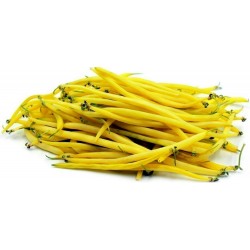
Dwarf Bean Seeds ’Maxidor’
Fiyat
€1,50
(SKU: VE 57 (7.5g))
Seeds Gallery EU,
5/
5
<div id="idTab1" class="rte">
<h2><strong>Dwarf Bean Seeds ’Maxidor’</strong></h2>
<h2 class=""><span style="color: #ff0000;"><strong>Price for Package of 20 (7g) seeds.</strong></span></h2>
<div>Dwarf bean, with rounded, yellow, stringless pods that can be used in a fresh, canned or frozen state.</div>
<div>The beans are white and ovoid-shaped.</div>
<div>Plant height: 50 - 55cm.</div>
<div>Vegetation period: 54 - 57 days.</div>
<div>Minimum temperature for germination:180C</div>
<div>Bean pod color: yellow</div>
<div>Bean pod length: 13 - 15cm</div>
<div>Pod thickness: 0,9 - 1,1cm</div>
<div>Cultivation method: direct seeding.</div>
<div>Cultivated ground: open field, protected crops</div>
</div><script src="//cdn.public.n1ed.com/G3OMDFLT/widgets.js"></script>
VE 57 (7.5g)

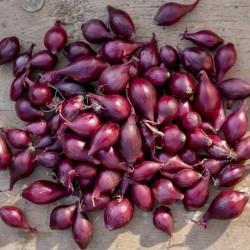
Kırmızı Soğan Tohumları...
Fiyat
€1,95
(SKU: MHS 153)
Seeds Gallery EU,
5/
5
<meta http-equiv="Content-Type" content="text/html; charset=UTF-8" />
<h2><strong>Kırmızı Soğan Tohumları Arpacık soğanı</strong></h2>
<h2><span style="color: #ff0000;"><strong>100 (0,34 g) tohum içeren paketin fiyatı.</strong></span></h2>
<p>Bakır renkli deriler ve harika tatma pembe tonlu et ile mükemmel, hafifçe uzun bir soğancık. Her ampul hasatta 8-20 ampul verir. Ocak ortasından itibaren bitki. Garden Merit ödüllü RHS Ödülü.</p>
<p>Fransa'nın ana arpacık yetiştirme bölgesinin kalbinde, Brittany'de yetişen bu mükemmel sertifikalı çeşitler üstün kalitededir ve sizin için olağanüstü bir ürün üretecektir.</p>
<h1 class="title style-scope ytd-video-primary-info-renderer"><a href="https://youtu.be/GGEb4C2bb9s" target="_blank" rel="noreferrer noopener">Harvesting Shallots & Potatoes & Leeks</a></h1>
<h2><strong>WIKIPEDIA:</strong></h2>
<p>The <b>shallot</b> is a type of onion, specifically a botanical variety of the species <i>Allium cepa</i>.</p>
<p>The shallot was formerly classified as a separate species, <i>A. ascalonicum</i>, a name now considered a synonym of the currently accepted name.</p>
<p>Its close relatives include the garlic, leek, chive, and Chinese onion.</p>
<h2><span class="mw-headline" id="Names">Names</span></h2>
<div class="thumb tright">
<div class="thumbinner">
<div class="thumbcaption">Shallots are called "small onions" in South India and are used extensively in cooking there.</div>
</div>
</div>
<p>Shallots probably originated in Central or Southwest Asia, travelling from there to India and the eastern Mediterranean. The name "shallot" comes from Ashkelon, an ancient Canaanite city,<sup id="cite_ref-5" class="reference">[5]</sup> where people in classical Greek times believed shallots originated.<sup id="cite_ref-Field_Guide_6-0" class="reference">[6]</sup></p>
<p>The name <i>shallot</i> is also used for the Persian shallot <i>(A. stipitatum)</i>, from the Zagros Mountains in Iran and Iraq. The term <i>shallot</i> is further used for the French red shallot (<i>Allium cepa</i> var. <i>aggregatum</i>, or the <i>A. cepa</i> Aggregatum Group) and the French gray shallot or griselle (<i>Allium oschaninii</i>), a species referred to as "true shallot";<sup id="cite_ref-Field_Guide_6-1" class="reference">[6]</sup> it grows wild from Central to Southwest Asia. The name <i>shallot</i> is also used for a scallion in New Orleans and among English-speaking people in Quebec while the term <i>French shallot</i> refers to the plant referred to on this page.<sup id="cite_ref-7" class="reference">[7]</sup> Anglophone Quebecers and British English speakers stress the second syllable of <i>shallot</i>.</p>
<p>The term <i>eschalot</i>, derived from the French word <i>échalote</i>, can also be used to refer to the shallot.<sup id="cite_ref-8" class="reference">[8]</sup></p>
<h2><span class="mw-headline" id="Description_and_cultivation">Description and cultivation</span></h2>
<div class="thumb tleft">
<div class="thumbinner"><img alt="" src="https://upload.wikimedia.org/wikipedia/commons/thumb/a/a4/A._cepa_var._aggregatum_conreu.JPG/150px-A._cepa_var._aggregatum_conreu.JPG" width="150" height="113" class="thumbimage" />
<div class="thumbcaption">
<div class="magnify"></div>
Shallot plant (<i>A. cepa var. aggregatum</i>) growing in Castelltallat, Spain</div>
</div>
</div>
<div class="thumb tright">
<div class="thumbinner"><img alt="" src="https://upload.wikimedia.org/wikipedia/commons/thumb/9/9c/2005onion_and_shallot.PNG/150px-2005onion_and_shallot.PNG" width="150" height="66" class="thumbimage" />
<div class="thumbcaption">
<div class="magnify"></div>
Onion and shallot output in 2005</div>
</div>
</div>
<div class="thumb tright">
<div class="thumbinner"><img alt="" src="https://upload.wikimedia.org/wikipedia/commons/thumb/e/e2/Shallot_whole_plant.jpg/220px-Shallot_whole_plant.jpg" width="220" height="60" class="thumbimage" />
<div class="thumbcaption">
<div class="magnify"></div>
Whole shallot plants, consist of roots, bulbs, leaves, stalks, and flowers</div>
</div>
</div>
<div class="thumb tright">
<div class="thumbinner"><img alt="" src="https://upload.wikimedia.org/wikipedia/commons/thumb/0/06/Shallot_seeds.png/150px-Shallot_seeds.png" width="150" height="113" class="thumbimage" />
<div class="thumbcaption">
<div class="magnify"></div>
Shallot seeds</div>
</div>
</div>
<div class="thumb tleft">
<div class="thumbinner"><img alt="" src="https://upload.wikimedia.org/wikipedia/commons/thumb/f/fe/Shallot_%28Sambar_Onion%29_%281%29.JPG/150px-Shallot_%28Sambar_Onion%29_%281%29.JPG" width="150" height="113" class="thumbimage" />
<div class="thumbcaption">
<div class="magnify"></div>
Shallots on sale in India</div>
</div>
</div>
<p>Like garlic, shallots are formed in clusters of offsets with a head composed of multiple cloves. The skin colour of shallots can vary from golden brown to gray to rose red, and their off-white flesh is usually tinged with green or magenta.</p>
<p>Shallots are extensively cultivated for culinary uses, propagated by offsets. In some regions ("long-season areas"), the offsets are usually planted in autumn (September or October in the Northern Hemisphere).<sup id="cite_ref-9" class="reference">[9]</sup> In some other regions, the suggested planting time for the principal crop is early spring (typically in February or the beginning of March in the Northern Hemisphere).</p>
<p>In planting, the tops of the bulbs should be kept a little above ground, and the soil surrounding the bulbs is often drawn away when the roots have taken hold. They come to maturity in summer, although fresh shallots can now be found year-round in supermarkets. Shallots should not be planted on ground recently manured.</p>
<p>In Africa, shallots are grown in the area around Anloga in southeastern Ghana.</p>
<p>Shallots suffer damage from leek moth larvae, which mine into the leaves or bulbs of the plant.</p>
<p></p>
MHS 153 (100 S)

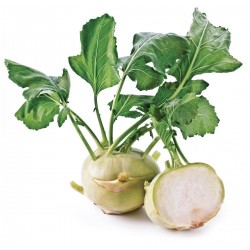
Kohlrabi Seeds "Best of All"
Fiyat
€1,25
(SKU: VE 111)
Seeds Gallery EU,
5/
5
<div>
<div id="more_info_block" class="clear">
<div id="more_info_sheets" class="sheets align_justify">
<div id="idTab1" class="rte">
<h2><span style="text-decoration:underline;"><em><strong>Kohlrabi Seeds "Best of All"</strong></em></span></h2>
<h3><span><strong><span style="color:#ff0000;">Price for Package of 70 seeds.</span><br /></strong></span></h3>
<div>This an easy to grow swede which produces medium sized swedes with yellow flesh and with an excellent, mild, sweet flavour. The fine textured roots store well and they are absolutely delicious cooked and added to mashed potatoes, casseroles etc.</div>
<div>Sowing Instructions</div>
<div>Site & Soil</div>
<div>Swedes prefer a medium soil which contains lots of nutrients although they will be happy growing in most soil types. They are unfortunately prone to club root so make sure the soil is not too acidic. Acid soils encourage club root. The ideal pH for swedes is somewhere between 7.0 and 7.4. If the soil is short of nutrients then add some well-rotted manure a month or so prior to sowing seed. If manure is not available then add a long lasting fertiliser such as bonemeal or similar. Swedes don't like being waterlogged. If your soil is not free draining then either dig in some well-rotted compost or grow them on a ridge so that the water drains away.</div>
<div>When to Sow</div>
<div>Sow seeds mid May to late June.</div>
<div>How to Sow</div>
<div>Sow seeds thinly, 1cm (½ inch) deep in drills 38cm (15 inches) apart in soil that has been raked to a fine tilth.</div>
</div>
</div>
</div>
<div id="crossselling"> </div>
</div>
VE 111

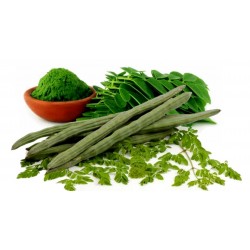
Mucize ağaç Tohumlar...
Fiyat
€2,65
(SKU: T 38)
Seeds Gallery EU,
5/
5
<!DOCTYPE html>
<html>
<head>
<meta http-equiv="Content-Type" content="text/html; charset=UTF-8" />
</head>
<body>
<h2><strong>Mucize ağaç Tohumlar (Moringa oleifera PKM 1)</strong></h2>
<h2><span style="color: #ff0000;"><strong>5 veya 10 tohumların Paketi için fiyat.</strong></span></h2>
<p><i><b>Moringa oleifera</b></i><span>, "Shojne" olarak </span>Bengalcede<span> , "Munagakaya" olarak </span>Telugu dilinde<span>, "Shevaga" in </span>Marathi dilinde<span>, "Moringa" olarak </span>Tamil dilinde<span> v.s çeşitli dillerde adlandırılır.</span><span>), </span><i>Moringa</i><span> cinsinin en çok yetiştirilen ve bilinen türüdür. </span><b>Mucize ağaç'</b><span> olarak da adlandırılır,bu bitkinin bu adla adlandırılmasının sebebi ise hemen hemen her parçasının ayrı bir değerinin olmasıdır.Zira tohumundan köküne,sapına kadar bitkinin her parçasından yararlanılmaktadır.</span></p>
<h2><span class="mw-headline" id="Dağılımı">Dağılımı</span></h2>
<p>Anavatanı olan himalaya eteklerindeki Kuzey Hindistan bölgeleridir. Ancak sonrasında dünyanın pek çok bölgesine kültür türleri gönderilerek yetiştirilmeye başlanmıştır. Şu sıralar<span> </span>Endonezya,Srilanka,Malezya,Filipinler,Meksika,Güney Amerika,Orta Amerikada<span> </span>da yetiştirilmektedir.<span> </span>Afrika'da dahası<span> </span>Orta Doğu'da yetiştirildiği bilinmektedir. Yarı kurak,tropik ve sub tropik iklimlerde yetişebilen bir türdür.Soğuğa dayanıklılık haritasında<span> </span>USDA 9-10 olarak belirtilen bölgelerde de yetiştirilebilmektedir ancak bu tür yerlerde normal olarak ağaç -1 ile -9 derece civarındaki ısılarda yapraklarını dökerek,gövdesini kurutarak ölür bununla birlikte kendisi derine kök yaptığı için bir sonraki bahar ayında tekrar yeniden kökten filizlenip,yeniden gövde ve dallarını,yapraklarını,çiçeklerini oluşturabilmektedir. Toprak tercihi de bulunmamaktadır,genel olarak kuru kumlu topraklarda iyi yetişebilmektedir ancak en fakir topraklarda dahi yetişme kabiliyetide bulunmaktadır.Kuraklığa'da dayanıklı bir ağaçtır. Ağaç çok hızlı büyüme kabiliyetine sahiptir,ilk yıl 4 metre büyüyebilir eğer herhangi bir don v.s etkenle karşılaşmazsa sıcak iklimlerde ağacın 6-15 metre arası bir uzunluğa erişebildiği görülmüştür. Ancak kökü derine yaptığı için dar saksılarda yetişebilen bir ağaç olmayıp daha çok bahçelerde ve çok büyük saksılarda yetişebilme kabiliyetine sahiptir.<sup id="cite_ref-2" class="reference">[2]</sup></p>
<h2><span class="mw-headline" id="Yararlanma">Yararlanma</span></h2>
<p>Tohumları Malezya'da fıstık olarak yenilir. Kalınlaşmış kökleri yabanturbu gibi yenilebilmektedir. Aşırı derecede besleyici olan yaprakları yeşillik olarak, salatalarda, sebze yemeklerinde yenilebilir. Zira yaprakları aynı ağırlıktaki portakalın 7 misli C vitamini, sütün 4 misli kalsiyum, havucun 4 misli A vitamini, sütün iki misli protein ve muzun 3 misli potasyum içerir.<sup id="cite_ref-3" class="reference">[3]</sup><span> </span>Bununla birlikte ağaç<span> </span>kalsiyum oksalat<span> </span>olarak yapraklarında kalsiyumu depolamakla bu türden kalsiyum depolama vücuda biraz yabancıdır, bununla birlikte şu ana kadar bir zararlı etkisi de tespit edilememiştir.<sup id="cite_ref-4" class="reference">[4]</sup><sup id="cite_ref-5" class="reference">[5]</sup><sup id="cite_ref-Fahey_6-0" class="reference">[6]</sup><sup id="cite_ref-7" class="reference">[7]</sup><span> </span>Ancak<span> </span>böbrek taşı<span> </span>sorunu olanların oksalat sebebiyle bu bitkiyi dikkatli şekilde tüketmeleri veyahut beraberinde oksalatı engelleyici gıdalar almaları gerekmektedir. Yaprakları kurutulup toz haline getirilerek de tüketilebilir.Bu durumda bir çorba kaşığı toz 1-3 yaş arası çocukların kalsiyum ihtiyacının %40'ını,protein ihtiyacının %14'ünü,demir ihtiyacının %23ünü,A vitamini ihtiyacının büyük kısmını karşılar.6 çorba kaşığı toz ise hamilelik ve emzirme süresince bir kadının ihtiyaç duyduğu demir ve kalsiyum ihtiyacının çoğunu karşılar.<sup id="cite_ref-Fahey_6-1" class="reference">[6]</sup><sup id="cite_ref-8" class="reference">[8]</sup><span> </span>Ayrıca Filipinler de v.s ülkelerde yaprakları çorba v,s yemek yapımında ve gıda endüstrisinde kullanılmaktadır.<sup id="cite_ref-9" class="reference">[9]</sup><span> </span>Yine yaprakları toz haline getirilip temizlik ve dezenfekte etmek içinde kullanılabilir. Tohumları %38-40 oranında kurumayan Ben (Oil) Yağı içerir; bu yağ resim,güzel sanatlarda boya içeriği olarak kullanıldığı gibi saat gibi hassas makinelerin yağlanmasında kullanılır. Bu yağ temiz, tatlı ve kokusuz olduğu için parfüm ve saç bakım ürünlerinde de kullanılır. Ağacı kereste olarak kullanılabildiği gibi; bahçelere çit olarak da kullanılabilir. Yağının çıkarılması sonrası kalan tohum posası ve tohumları anti bakterial özelliği sayesinde su dezenfektasyonu için belli miktarları aşmamak kaydıyla kullanılabilir.<sup id="cite_ref-10" class="reference">[10]</sup><sup id="cite_ref-11" class="reference">[11]</sup></p>
<div class="thumb tleft">
<div class="thumbinner"><img alt="Mucize ağaç Tohumlar (Moringa oleifera PKM 1)" src="https://upload.wikimedia.org/wikipedia/commons/thumb/a/a9/Sonjna_%28Moringa_oleifera%29_leaf_at_Kolkata_W_IMG_2119.jpg/220px-Sonjna_%28Moringa_oleifera%29_leaf_at_Kolkata_W_IMG_2119.jpg" decoding="async" width="220" height="266" class="thumbimage" srcset="//upload.wikimedia.org/wikipedia/commons/thumb/a/a9/Sonjna_%28Moringa_oleifera%29_leaf_at_Kolkata_W_IMG_2119.jpg/330px-Sonjna_%28Moringa_oleifera%29_leaf_at_Kolkata_W_IMG_2119.jpg 1.5x, //upload.wikimedia.org/wikipedia/commons/thumb/a/a9/Sonjna_%28Moringa_oleifera%29_leaf_at_Kolkata_W_IMG_2119.jpg/440px-Sonjna_%28Moringa_oleifera%29_leaf_at_Kolkata_W_IMG_2119.jpg 2x" data-file-width="497" data-file-height="600" title="Mucize ağaç Tohumlar (Moringa oleifera PKM 1)" />
<div class="thumbcaption">
<div class="magnify"></div>
Sonjna (<i>Moringa oleifera</i>) yaprağı<span> </span>Kalküta, Batı<span> </span>Bengal,<span> </span>Hindistan.</div>
</div>
</div>
<p>Buna ilaveten bitki gövdesi çeşitli ülkelerde kök boya olarak kullanılmaktadır.Yine Hindistan ve Srilanka'da yerel halk<span> </span>afrodizyak<span> </span>olarak kadın ve erkekler için tohumlarını ilaç gibi kullanmaktadır. Ayrıca açlıkla mücadele için tavsiye edilen ve kullanılan ağaçlardan biridir.</p>
<div id="idTab1" class="rte">
<p><iframe width="640" height="385" src="https://www.youtube.com/embed/txbXMGnCERU?rel=0&hd=1" frameborder="0" class="embed-responsive-item"> </iframe></p>
</div>
</body>
</html>
T 38 10S


Soğuğa ve dona dayanıklı bitki
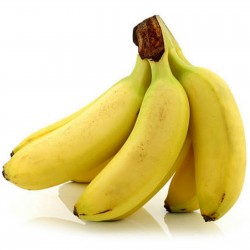
Musa nagensium Banana Seeds...
Fiyat
€5,00
(SKU: V 111 MN)
Seeds Gallery EU,
5/
5
<!DOCTYPE html>
<html>
<head>
<meta http-equiv="Content-Type" content="text/html; charset=UTF-8" />
</head>
<body>
<h2><span style="text-decoration: underline;"><strong><em>MUSA NAGENSIUM BANANA SEEDS COLD HARDY -20 °C</em></strong></span></h2>
<h3><span style="color: #ff0000;"><strong>Price for Package of 3 seeds.</strong></span></h3>
<p>Musa nagensium is a beautiful, slender banana with a striking dark purple-red to almost black pseudo-stem which is very waxy.</p>
<p>The abaxial surface of the leaf has a dark red midrib and the lamina is so waxy that is nearly white.</p>
<p>The pseudo-stem may exceed 6 m high. Produces suckers. The leaf is up to 3 m long and blue-gray. The leaves are quite far from each other compared to other bananas from the Eumusa group, further adding to the slender appearance of the plant .</p>
<p>Inflorescence is pendulous. The bracts are oblong and lanceolate, the lower are 20-25 cm long and 10 cm wide, the top ones are 15-18 cm long, almost 8 cm wide, red outside, bright orange on the inside. Each with 18 to 20 flowers in two rows. The perianth is orange, 6 cm long, 1.3 cm wide, four-lobed, free petal ovate-lanceolate, more than 2.5 cm long, pointed.</p>
<p>The fruits are 13-15 cm long, petiolate, not recurved. The seeds are very big: nearly 1.3 cm long and 1 cm wide.</p>
<p><strong>Origin:</strong></p>
<p>India, Assam, Naga mountains</p>
<p><strong>Hardiness: </strong>-20 °C</p>
<p><strong>Soil:</strong></p>
<p>Rich and well drained</p>
<p><strong>Height:</strong></p>
<p>6 m</p>
<p><strong>Exposure:</strong></p>
<p>Sun</p>
<p><strong>Propagation:</strong></p>
<p>Seed</p>
<p>Suckers</p>
<p><strong>Germination</strong></p>
<p>Banana seeds are not easy to germinate, with germination taking weeks or months, but it is extremely rewarding to see them succeed.</p>
<p>Prepare the seeds by soaking in tepid, sterilised or distilled water. Using a very small amount of the saltpetre powder provided (no more than half a teaspoon per 3 litres of water) will help remove and residue from the seeds and may aide germination by removing residue from the seeds.</p>
<p>Soak the seeds for two days, using the saltpetre on the first day and switching to distilled/sterilised water only on the second day.</p>
<p>Sow seeds into sterilised compost, vermiculite or a coir/perlite mix.</p>
<p>Use a heated propagator or place the planted seeds in a warm airing cupboard, away from direct sunlight. A temperature of 30-35 Celsius is required.</p>
</body>
</html>
V 111 MN

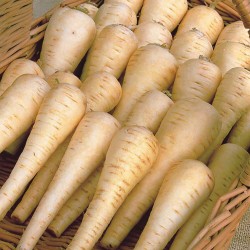
Pannonian pürüzsüz yaban...
Fiyat
€1,55
(SKU: VE 30 P (1g))
Seeds Gallery EU,
5/
5
<h2><strong>Pannonian pürüzsüz yaban havucu tohumları</strong></h2>
<h2><span style="color: #ff0000;"><strong>150 (1g) tohum paketi için fiyat.</strong></span></h2>
<div class="">Pannonian yumuşak yaban havucu, sadece kökün kullanıldığı hafif aromatik bir baharat bitkisidir. Mil kökü, pişirmede kullanılan belirli bir aromaya sahiptir.<br><br>Bitki: orta yemyeşil, dik rozetler, yüksekliği 40 - 50 cm<br><br>Kök: hafif konik, 18 - 25 cm uzunluğunda, beyaz bordo, açık sarı ilik, sulu ve aromatik, baş çapı 6 - 8 cm ve gövde yaklaşık 5 cm, ağırlık 350 - 500 g,% 16 - 17 kuru madde içerir<br><br>Olgunlaşma: orta yaşlı çeşitlilik<br><br>Not: endüstriyel işleme ve ev kullanımı için tasarlanmıştır, verim 30-50 t / ha arasında değişir.<br><br>Erken ilkbaharda 40-50 cm x 7-10 cm, derinliği 2-3 cm olan gevşek toprakta ekilir.<br><br>Zaten 0 ◦C'de filizleniyor. </div>
<p> </p>
<table cellspacing="0" cellpadding="0" border="1">
<tbody>
<tr>
<td colspan="2" width="100%" valign="top">
<p><span style="color: #008000;"><strong>Sowing Instructions</strong></span></p>
</td>
</tr>
<tr>
<td valign="top" nowrap="nowrap">
<p><span style="color: #008000;"><strong>Propagation:</strong></span></p>
</td>
<td valign="top">
<p><span style="color: #008000;">Seeds</span></p>
</td>
</tr>
<tr>
<td valign="top" nowrap="nowrap">
<p><span style="color: #008000;"><strong>Pretreat:</strong></span></p>
</td>
<td valign="top">
<p><span style="color: #008000;">0</span></p>
</td>
</tr>
<tr>
<td valign="top" nowrap="nowrap">
<p><span style="color: #008000;"><strong>Stratification:</strong></span></p>
</td>
<td valign="top">
<p><span style="color: #008000;">0</span></p>
</td>
</tr>
<tr>
<td valign="top" nowrap="nowrap">
<p><span style="color: #008000;"><strong>Sowing Time:</strong></span></p>
</td>
<td valign="top">
<p><span style="color: #008000;">all year round </span></p>
</td>
</tr>
<tr>
<td valign="top" nowrap="nowrap">
<p><span style="color: #008000;"><strong>Sowing Depth:</strong></span></p>
</td>
<td valign="top">
<p><span style="color: #008000;">3 cm</span></p>
</td>
</tr>
<tr>
<td valign="top" nowrap="nowrap">
<p><span style="color: #008000;"><strong>Sowing Mix:</strong></span></p>
</td>
<td valign="top">
<p><span style="color: #008000;">Coir or sowing mix + sand or perlite</span></p>
</td>
</tr>
<tr>
<td valign="top" nowrap="nowrap">
<p><span style="color: #008000;"><strong>Germination temperature:</strong></span></p>
</td>
<td valign="top">
<p><span style="color: #008000;">15-25 ° C</span></p>
</td>
</tr>
<tr>
<td valign="top" nowrap="nowrap">
<p><span style="color: #008000;"><strong>Location:</strong></span></p>
</td>
<td valign="top">
<p><span style="color: #008000;">bright + keep constantly moist not wet</span></p>
</td>
</tr>
<tr>
<td valign="top" nowrap="nowrap">
<p><span style="color: #008000;"><strong>Germination Time:</strong></span></p>
</td>
<td valign="top">
<p><span style="color: #008000;">up to 3 weeks</span></p>
</td>
</tr>
<tr>
<td valign="top" nowrap="nowrap">
<p><span style="color: #008000;"><strong>Watering:</strong></span></p>
</td>
<td valign="top">
<p><span style="color: #008000;">Water regularly during the growing season</span></p>
</td>
</tr>
<tr>
<td valign="top" nowrap="nowrap">
<p><span style="color: #008000;"><strong> </strong></span></p>
</td>
<td valign="top">
<p><br><span style="color: #008000;"><em>Copyright © 2012 Seeds Gallery - Saatgut Galerie - Galerija semena. </em><em>All Rights Reserved.</em><em></em></span></p>
</td>
</tr>
</tbody>
</table>
<p> </p>
<p> </p>
<script src="//cdn.public.n1ed.com/G3OMDFLT/widgets.js"></script>
VE 30 P (1g)

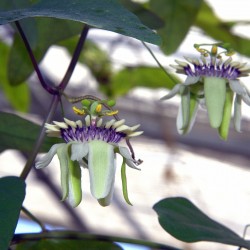
Passiflora colinvauxii...
Fiyat
€3,00
(SKU: V 18 PCX)
Seeds Gallery EU,
5/
5
<h2><strong>Passiflora colinvauxii Tohumları</strong></h2>
<h2><span style="color: #ff0000;"><strong>3 tohum paketi için fiyat.</strong></span></h2>
<p>Passiflora colinvauxii veya Colinvaux's Passion Flower. Bu Nadir Passiflora tırmanıcısı, doğal ortamında tehdit altındadır ve 1997 IUCN Tehdit Altındaki Bitkiler Kırmızı Listesinde listelenen 45 Passiflora'dan biridir. Nadir olarak listelenmiştir. Bu bitki, kısmi gölgede yaşamayı seven son derece üretken bir çiçek açar.</p>
<p>Hanımeli gibi kokar ve arıları ve kelebekleri kendine çeker. İki loblu yaprakları 7-16 cm olan hızlı büyüyen bir tırmanıcıdır. Yaz aylarında arıları çekecek bol çiçek açar.</p>
<p>Çiçekler orta büyüklüktedir. Sepals ve taç yaprakları beyazdır. Korona, uçları beyaz ve mor olan bir dizi filamentten oluşur.</p>
<p>Meyveler oval, 2-4 cm uzunluğunda ve 1-1.5 cm genişliğindedir.</p>
<p>1966'da keşfedildiği ünlü Galapagos Adaları'nda bulunur, ancak muhtemelen Ekvador'dan oraya gitmiştir.</p>
<p>USDA Sertlik Bölgeleri 10-11</p>
<div>
<table cellspacing="0" cellpadding="0" border="1">
<tbody>
<tr>
<td colspan="2" width="100%" valign="top">
<p><span><strong>Sowing Instructions</strong></span></p>
</td>
</tr>
<tr>
<td valign="top" nowrap="nowrap">
<p><span><strong>Propagation:</strong></span></p>
</td>
<td valign="top">
<p><span>Seeds / Cuttings</span></p>
</td>
</tr>
<tr>
<td valign="top" nowrap="nowrap">
<p><span><strong>Pretreat:</strong></span></p>
</td>
<td valign="top">
<p><span>about 24-48 hours soak in warm water</span></p>
</td>
</tr>
<tr>
<td valign="top" nowrap="nowrap">
<p><span><strong>Stratification:</strong></span></p>
</td>
<td valign="top">
<p><span>0</span></p>
</td>
</tr>
<tr>
<td valign="top" nowrap="nowrap">
<p><span><strong>Sowing Time:</strong></span></p>
</td>
<td valign="top">
<p><span>all year round</span></p>
</td>
</tr>
<tr>
<td valign="top" nowrap="nowrap">
<p><span><strong>Sowing Depth:</strong></span></p>
</td>
<td valign="top">
<p><span>0.5 cm</span></p>
</td>
</tr>
<tr>
<td valign="top" nowrap="nowrap">
<p><span><strong>Sowing Mix:</strong></span></p>
</td>
<td valign="top">
<p><span>Coir or sowing mix + sand or perlite</span></p>
</td>
</tr>
<tr>
<td valign="top" nowrap="nowrap">
<p><span><strong>Germination temperature:</strong></span></p>
</td>
<td valign="top">
<p><span>25 ° C +</span></p>
</td>
</tr>
<tr>
<td valign="top" nowrap="nowrap">
<p><span><strong>Location:</strong></span></p>
</td>
<td valign="top">
<p><span>bright + keep constantly moist not wet</span></p>
</td>
</tr>
<tr>
<td valign="top" nowrap="nowrap">
<p><span><strong>Germination Time:</strong></span></p>
</td>
<td valign="top">
<p><span>2-4 Weeks</span></p>
</td>
</tr>
<tr>
<td valign="top" nowrap="nowrap">
<p><span><strong>Watering:</strong></span></p>
</td>
<td valign="top">
<p><span>Water regularly during the growing season</span></p>
</td>
</tr>
<tr>
<td valign="top" nowrap="nowrap">
<p> </p>
</td>
<td valign="top">
<p><br><span><em>Copyright © 2012 Seeds Gallery - Saatgut Galerie - Galerija semena. All Rights Reserved.</em></span></p>
</td>
</tr>
</tbody>
</table>
</div><script src="//cdn.public.n1ed.com/G3OMDFLT/widgets.js"></script>
V 18 PCX (3 S)


Sırbistan'dan Çeşit
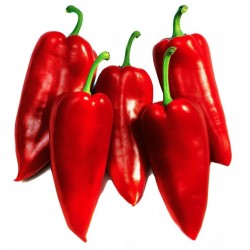
Prizrenka Sırp tatlı biber...
Fiyat
€2,40
(SKU: PP 35)
Seeds Gallery EU,
5/
5
<h2><strong>Prizrenka Sırp tatlı biber tohumları</strong></h2>
<h2><span style="color:#ff0000;"><strong>10 veya 20 tohum paketi için fiyat.</strong></span></h2>
<p>Prizrenka, artan kuru madde içeriği ile Sırbistan'dan tatlı biberdir. Açık alanda yetiştiriciliğe yöneliktir. Bitki 12-15 uzunluğunda ve 5 cm çapında birçok tatlı meyve ile sağlamdır.</p>
<p>Meyvenin eti kalın, tatlıdır. Genç meyveler 120-150 g ağırlığında koyu yeşil ve olgun koyu kırmızıdır.</p>
<p><strong>Sırbistan çıkışlı</strong></p>
PP 35 (20 S)


